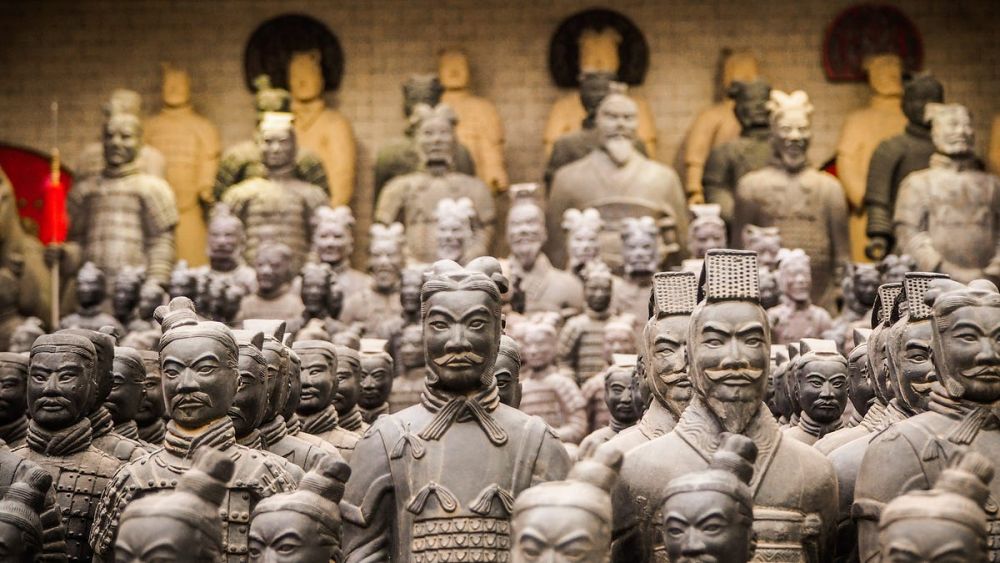The Terracotta Army is one of the most significant archaeological discoveries of the 20th century, located in the Shaanxi province near Xi'an, China. It is a form of funerary art buried with the first Emperor of China, Qin Shi Huang, in 210–209 BCE, with the purpose of protecting the emperor in his afterlife. The Terracotta Army is part of a larger necropolis that includes a massive tomb complex. The figures, dating from approximately the late third century BCE, were discovered in 1974 by local farmers. The site features over 8,000 soldiers, 130 chariots with 520 horses, and 150 cavalry horses, most of which still remain buried in the pits. Each figure is unique, with intricate details that reflect the high craftsmanship of the sculptors of the time. The army is arrayed in battle formation, showcasing the military might and organizational skills of the Qin Dynasty. The site serves as a museum and has become one of China's major tourist attractions, drawing millions of visitors annually, fascinated by the history and scale of the Terracotta Army.

